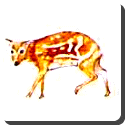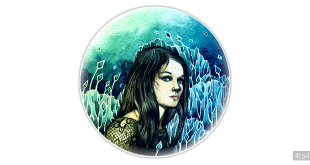 Chevrotain — The four species of chevrotain, also known as mouse deer, make up the family Tragulidae. Chevrotains are small, secretive creatures, now found only in the tropical forests of Africa, India, and South-east Asia. They are the only living members of the infraorder Tragulina.
Chevrotain — The four species of chevrotain, also known as mouse deer, make up the family Tragulidae. Chevrotains are small, secretive creatures, now found only in the tropical forests of Africa, India, and South-east Asia. They are the only living members of the infraorder Tragulina.
In Malay folklore, the mouse deer plays the same role as the wily fox of European fables. The Malaysian-made Perodua Kancil car is named after the chevrotain, as it is a very small vehicle. The Telugu name for the animal is “Jarini Pandi”, which literally means “a deer and a mouse”. The word ‘chevrotain’ itself is French, and can be translated as ‘little goat’.
The family was widespread and successful from the Oligocene (34 million years ago) to the Miocene (about 5 million years ago), but has remained almost unchanged over that time and remains as an example of primitive ruminant form. Chevrotains have a four-chambered stomach to ferment tough plant foods, but the third chamber is poorly developed. Also like other ruminants, they lack upper incisors, and give birth to only a single young, rather than having pig-like litters. The dental formula of chevrotains is the same as that of some smaller deer:
Chevrotains are solitary animals, and usually interact only to mate. The young are weaned at three months of age, and reach sexual maturity at between five and ten months, depending on species. Parental care is relatively limited. Although they lack the types of scent glands found in most other ruminants, they do possess a chin gland for marking each other as mates or antagonists, and, in the case of the water chevrotain, anal and preputial glands for marking territory. Their territories are relatively small, on the order of 13-24 hectares, but neighbors generally ignore each other, rather than competing aggressively.
 Kids Portal For Parents India Kids Network
Kids Portal For Parents India Kids Network






